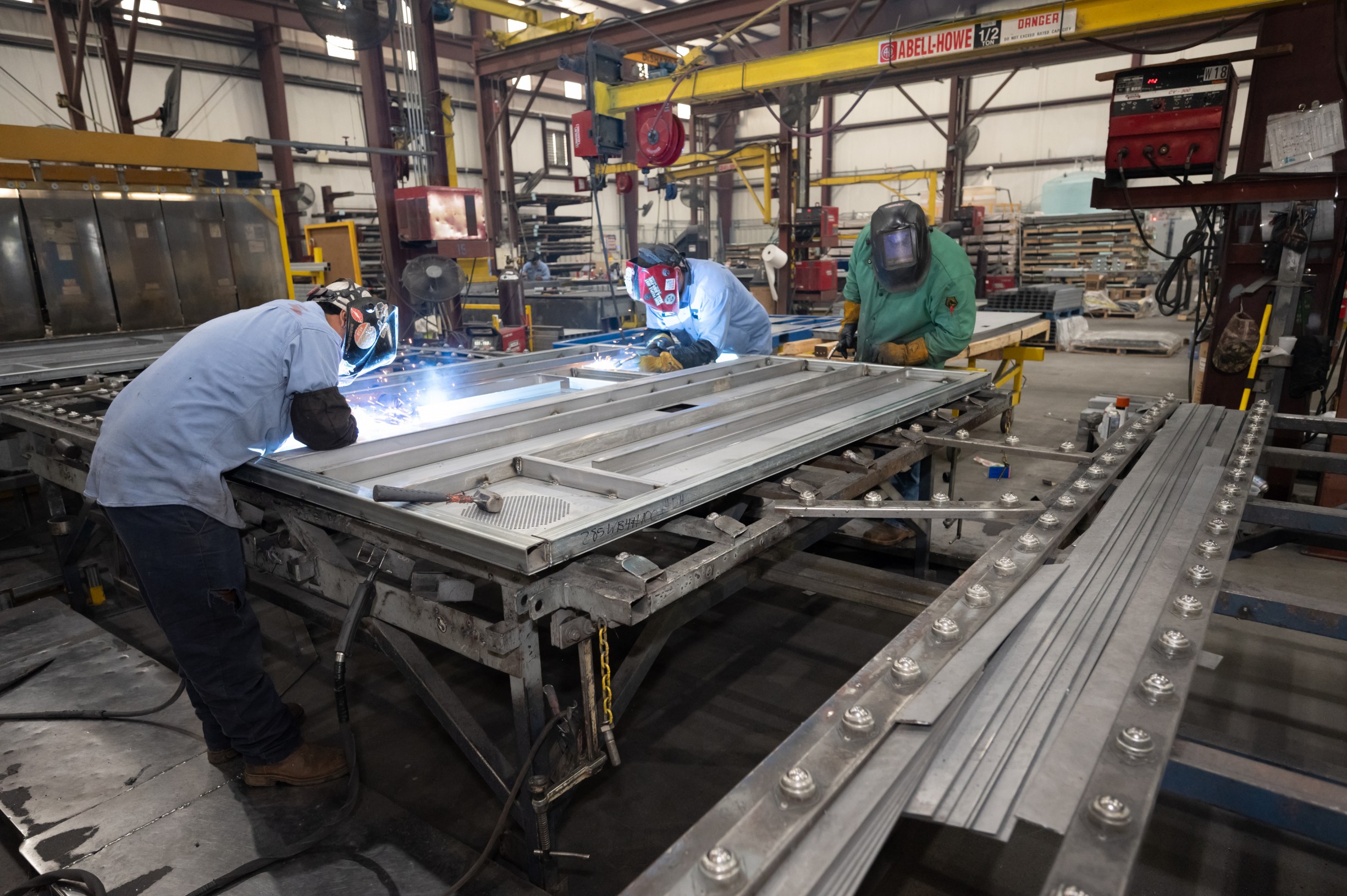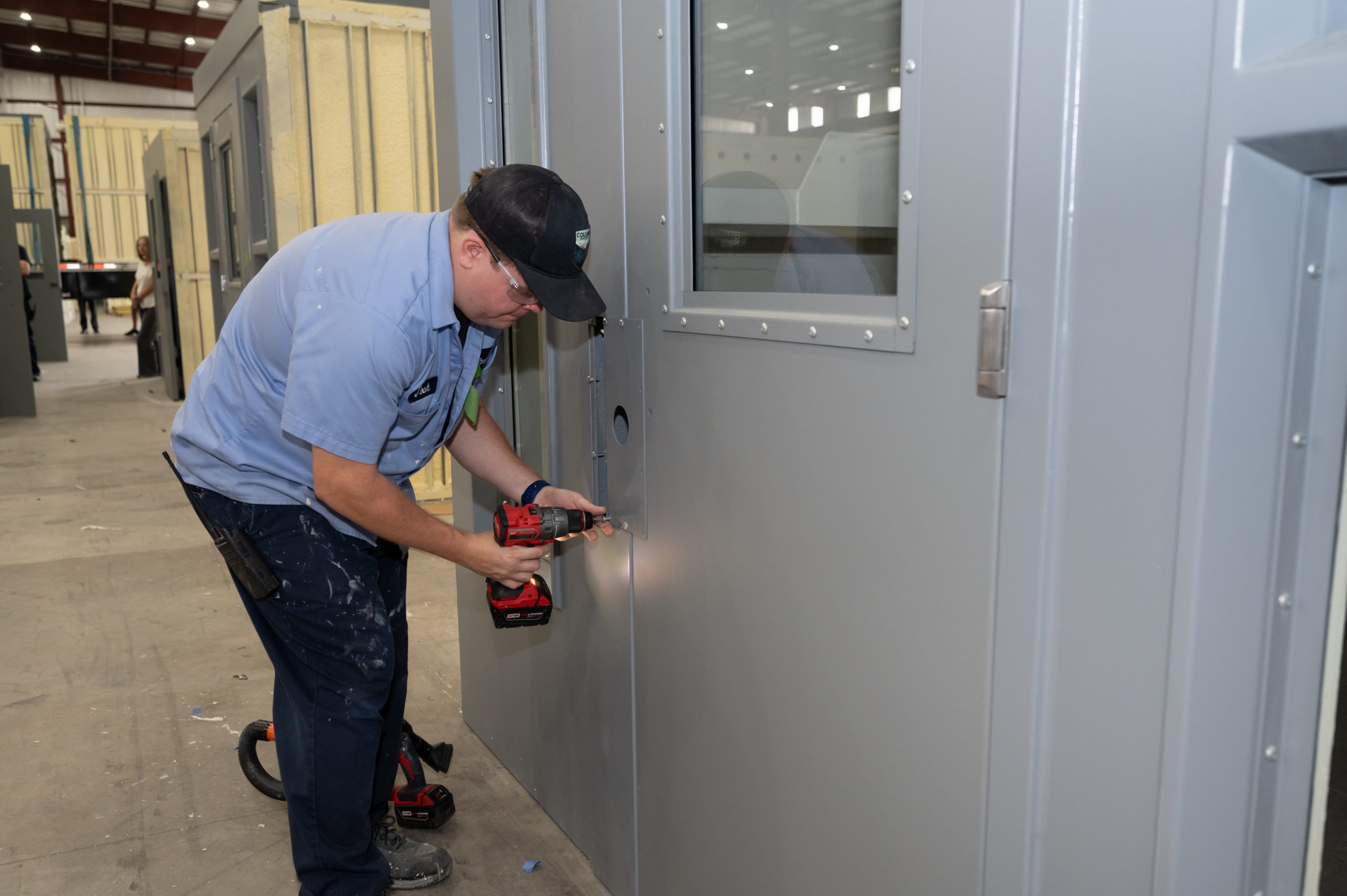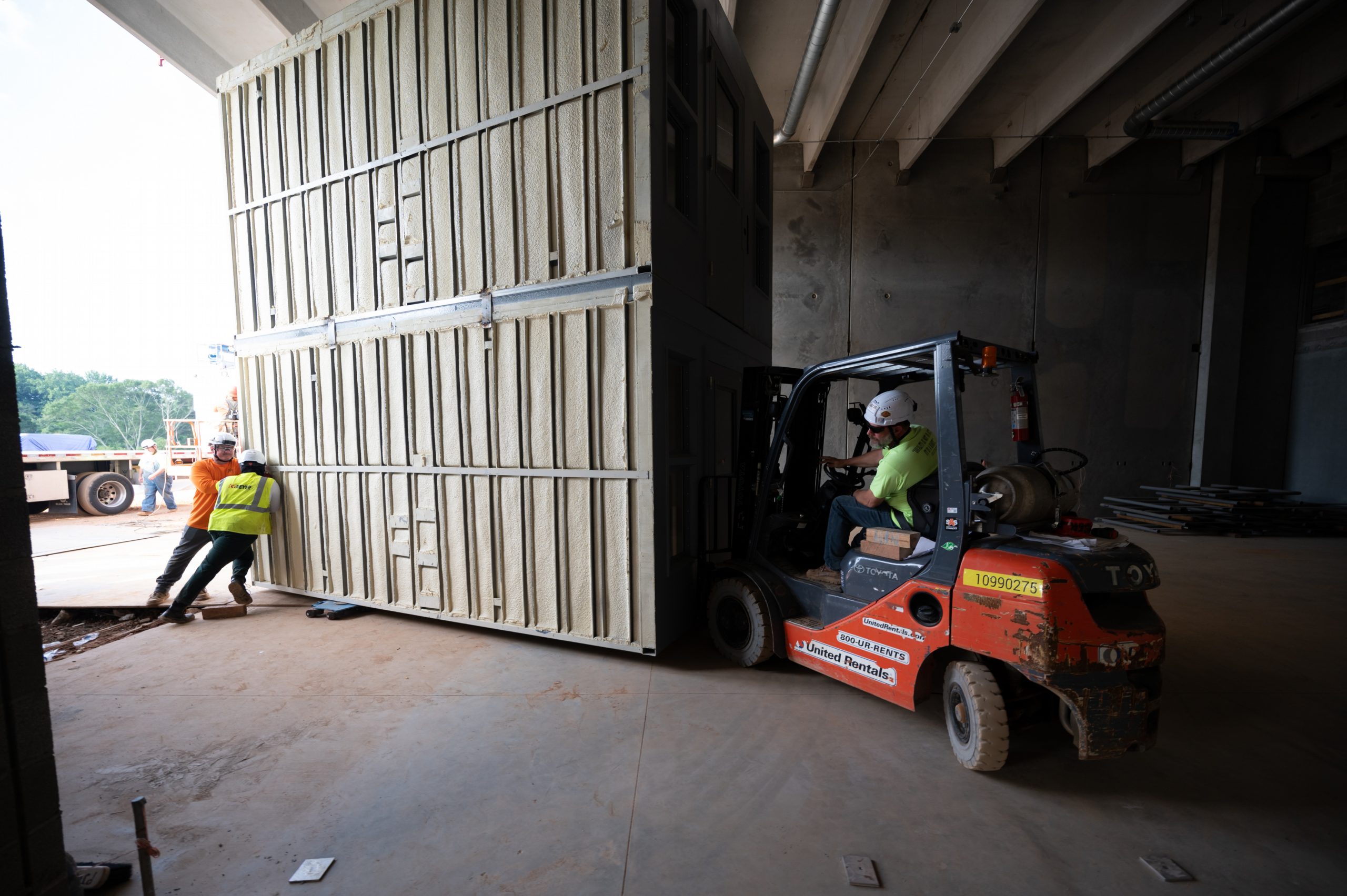Modular Correctional Facility Construction: Revolutionizing Prison Infrastructure
Modular correctional facility construction has gained traction in recent years as a smart solution for expanding prison capacity. This approach uses pre-built units that can be quickly assembled on-site. It offers a faster, more cost-effective alternative to traditional building methods.
Modular construction can reduce project timelines by up to 50% compared to conventional prison building techniques. This speed is crucial for addressing overcrowding issues and meeting court-mandated capacity requirements.
States like Florida have successfully used modular methods to expand corrections capacity when faced with tight deadlines.
The modular approach also allows for more flexibility in design and future expansion.
Facilities can be easily modified or relocated as needs change. This adaptability makes modular construction an attractive option for correctional departments looking to future-proof their investments.
Key Takeaways
- Modular construction speeds up prison building projects significantly
- Pre-built units offer design flexibility and easy future modifications
- This method can be more cost-effective than traditional construction techniques
Modular Construction Fundamentals
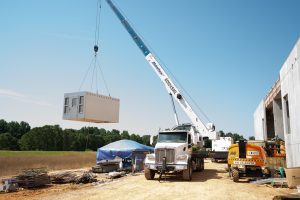 Modular construction uses pre-made units built in a factory. These units are then moved to the building site.
Modular construction uses pre-made units built in a factory. These units are then moved to the building site.
Workers put the units together to make a complete structure.
Each unit is built with walls, floors, and ceilings already in place. They often include electrical wiring, plumbing, and other systems. This saves time at the construction site.
Modular units come in different sizes and shapes. They can be stacked or placed side-by-side. This allows for flexible designs to fit various needs.
The factory setting offers better quality control. It protects materials from weather damage during construction. Workers can also use precise tools and techniques more easily.
Here are some key benefits of modular construction:
- Faster building time
- Lower costs
- Less waste
- Consistent quality
- Reduced site disruption
Modular methods work well for many building types. These include homes, offices, schools, and correctional facilities. The process is the same, but the end result can vary widely.
Architects and engineers design modular buildings carefully. They must consider how the units will fit together. They also plan for transportation and on-site assembly.
Design Principles of Modular Correctional Facilities
Modular correctional facilities use pre-made units to build prisons quickly and efficiently. These units are made off-site and put together at the prison location. This method saves time and money compared to traditional building.
Key design principles for modular prisons include:
• Flexibility
• Scalability
• Security
• Durability
Modular units allow prisons to be expanded or changed easily. Facilities can grow to house more inmates as needed. The units are also strong and built to last in tough prison conditions.
Safety is a top priority in modular prison design. Units are made with secure materials and built-in safety features. This helps protect both inmates and staff.
Modular prisons aim to create better living spaces for inmates. Healthy design principles are used to improve mental health and reduce stress.
This can include natural light, outdoor access, and calming colors.
The layout of modular prisons is often linear due to the shape of the units. Designers work to create efficient spaces that allow for proper supervision and inmate movement.
Modular construction also allows for standardization across facilities. This helps with staff training and inmate transfers between prisons.
Regulatory Compliance and Standards
Modular correctional facilities must meet strict regulations and standards. These rules ensure safety, security, and humane conditions for inmates and staff.
The American Correctional Association (ACA) sets key standards for prisons and jails.
Modular facilities need to comply with ACA requirements for:
- Cell size and occupancy
- Lighting and ventilation
- Fire safety systems
- Plumbing and sanitation
Local building codes also apply to modular prison construction. These cover structural integrity, electrical systems, and accessibility.
Federal laws like the Americans with Disabilities Act impact facility design.
Modular units must include accessible cells and common areas.
Many states have their own prison regulations. These may address things like:
• Minimum space per inmate
• Dayroom sizes
• Staff-to-inmate ratios
• Medical and mental health facilities
Modular manufacturers work closely with correctional planners. Together they ensure designs meet all applicable standards. This collaborative approach helps speed up the approval process.
Regular inspections verify ongoing compliance. Modular facilities can be easily modified if standards change. This flexibility is a key advantage of modular construction.
Safety and Security Considerations
Safety and security are top priorities in modular correctional facility construction. Designers must carefully plan layouts to maximize staff visibility and control.
Secure settings traditionally use building design to enhance security. This includes strategic placement of barriers, cameras, and control rooms.
Key safety features in modular prison designs:
- Reinforced walls and doors
- Shatterproof windows
- Limited access points
- Advanced locking systems
Modular units allow for standardized safety elements across facilities. This consistency helps staff maintain secure environments more effectively.
Proper lighting is crucial for safety.
Designers incorporate both natural and artificial light sources to reduce blind spots and improve surveillance.
Secure perimeters are essential in correctional facilities.
Modular construction enables efficient integration of fencing, guard towers, and electronic monitoring systems.
Designers also focus on fire safety. They include fire-resistant materials and multiple evacuation routes in modular layouts.
Material Selection for Modular Units
Picking the right materials for modular correctional units is key. Builders must balance strength, cost, and safety.
Popular choices include steel, concrete, and composite materials.
Steel is strong and fire-resistant. It allows for thin yet sturdy walls in modular units. This helps save space and weight during transport.
Concrete offers durability and sound insulation. Precast concrete panels are often used for floors and walls. They provide a solid, secure structure for correctional facilities.
Composite materials combine different elements for unique benefits. Fiber-reinforced polymers, for example, are lightweight yet strong. They resist corrosion and require little maintenance.
Prefabricated building envelopes are gaining popularity. These ready-made outer shells can include insulation and finishes. They speed up construction and ensure consistent quality.
Fire safety is crucial in material selection. All materials must meet strict fire codes. Flame-retardant coatings and materials are often used to enhance safety.
Durability is another key factor. Materials should withstand wear and tear from daily use. They must also resist damage from potential inmate tampering.
Cost-effectiveness matters too. Builders look for materials that offer good value over the long term. This includes considering maintenance and replacement costs.
Sustainability and Eco-Friendly Practices
Modular correctional facility construction offers many benefits for sustainability. These buildings can be made with eco-friendly materials and practices. This helps reduce the environmental impact.
One key advantage is less waste during construction. Modular units are built in factories with precise measurements. This cuts down on excess materials at the building site.
Energy efficiency is another plus. Modular designs often include better insulation and smart building features. These help lower energy use over time.
Modular buildings can also be easily upgraded or moved. This flexibility extends their usable life. It prevents the need to demolish and rebuild as needs change.
Some modular prisons incorporate green spaces. These areas can be used for inmate rehabilitation programs focused on nature and sustainability.
Water conservation is important in correctional facilities. Modular designs can include low-flow fixtures and rainwater collection systems. These features reduce water waste.
The factory-controlled environment for modular construction also improves quality. This means fewer repairs and replacements are needed over time. Less maintenance translates to reduced resource use in the long run.
Cost Analysis and Budget Planning
Budget planning is crucial for modular correctional facility construction projects. Costs can vary based on factors like facility size, security level, and location.
Prefabricated modular construction often offers cost savings compared to traditional methods. This approach can reduce on-site labor and shorten construction timelines.
Key cost considerations include:
- Materials
- Labor
- Site preparation
- Security systems
- Utilities
Life cycle cost analysis helps planners understand long-term expenses. This includes maintenance, energy use, and potential future expansions.
Initial budgets may not cover all expenses. Cost overruns can occur due to unexpected issues or changes in project scope.
Planners should create detailed cost estimates early in the process. This helps secure adequate funding and avoid budget shortfalls later.
Regular budget reviews throughout the project are important. They allow for adjustments as needed to stay on track financially.
Modular construction can be especially helpful when dealing with overcrowding or tight budgets. It offers a faster, often more cost-effective solution compared to traditional building methods.
Project Management Strategies
Effective project management is key for successful modular correctional facility construction. Project managers must coordinate multiple aspects of the build process.
Clear communication is essential. Regular meetings keep all team members aligned on goals and timelines. Project managers should interview stakeholders to understand needs and requirements.
Standardization helps streamline construction. Using standardized project delivery models and modular building designs can reduce complexity and shorten timelines.
Careful planning is critical. Project managers should:
- Create detailed schedules
- Allocate resources efficiently
- Manage budgets closely
- Identify and mitigate risks early
Quality control measures ensure modular components meet specifications. Regular inspections throughout assembly maintain standards.
Technology aids in coordination. Project management software helps track progress and deadlines. 3D modeling visualizes designs before construction begins.
Flexibility is important. Managers must adapt to unexpected challenges while keeping the project on track. Having contingency plans helps address issues quickly.
By implementing these strategies, project managers can guide modular correctional facility construction efficiently from start to finish.
Logistics and Assembly of Modular Structures
Modular correctional facility construction relies on careful planning of logistics and assembly processes. Offsite fabrication centers produce building modules, which are then transported to the construction site.
Modules are designed for easy transport on trucks or rail. Precise scheduling is key to ensure timely delivery and minimize on-site storage needs.
At the construction site, a team assembles the pre-built modules. They use cranes to lift and position each unit. Workers then connect the modules and integrate building systems.
This approach offers several benefits:
- Faster construction timelines
- Reduced on-site labor requirements
- Improved quality control
- Less disruption to surrounding areas
Optimizing the logistics chain is crucial for successful modular projects. This includes coordinating suppliers, transporters, and on-site crews.
Building Information Modeling (BIM) helps manage the complex logistics of modular construction. It allows teams to plan and visualize the assembly process before work begins.
Proper planning of module fabrication, delivery, and assembly is essential. It ensures smooth operations and helps realize the full benefits of modular construction for correctional facilities.
Technological Integration in Modular Construction
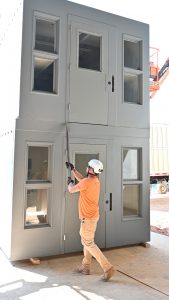 Modular construction of correctional facilities benefits from advanced technology integration. This approach enhances efficiency, safety, and functionality.
Modular construction of correctional facilities benefits from advanced technology integration. This approach enhances efficiency, safety, and functionality.
Building Information Modeling (BIM) plays a key role. It allows for detailed 3D modeling of facility components. This helps detect conflicts before construction begins.
Integrated technology platforms streamline the construction process. They connect design, manufacturing, and assembly phases seamlessly.
Prefabrication techniques use robotic systems for precise assembly. This ensures consistent quality across modules.
Smart building technologies are incorporated into modular units. These include:
- Energy-efficient HVAC systems
- Automated lighting controls
- Advanced security systems
Energy-efficient technologies like low-emissivity windows and thermal insulation are easily integrated. This improves the facility’s overall energy performance.
Modular designs allow for future technology upgrades. Facilities can adapt to new security and operational needs over time.
Digital twin technology enables virtual facility management. It provides real-time data on building systems and inmate activities.
Standardized interfaces ensure smooth integration of various modules. This allows for rapid assembly on-site and reduces construction time.
Case Studies of Modular Correctional Facilities
Modular construction has gained traction in building correctional facilities. This approach offers speed, cost-effectiveness, and quality control advantages.
Several prisons have used modular building techniques successfully. These cases show the benefits and challenges of this method.
One study looked at 6 projects, including 4 prisons. It found that modular construction worked well for standardized prison cells. The main issue was when the distance between the construction site and factory was large.
Another case examined precast cell modules in a campus-style correctional facility. The modules proved useful for both stand-alone buildings and multi-story structures.
A state facing rapid prison population growth used modular methods to build seven new prisons in just eight years. This approach allowed for faster construction to meet urgent needs.
One project compared modular and traditional concrete construction for a medium-security prison. The study focused on costs and found pros and cons to each method.
Innovations in Modular Facility Construction
Modular construction has transformed correctional facility building. This approach uses prefabricated units assembled on-site, speeding up the process.
One key innovation is the use of prototype designs. These standardized plans allow for quicker approvals and more efficient construction.
Advanced materials have improved modular units. Stronger, lighter materials make transportation and assembly easier while maintaining security.
Smart technology integration is another breakthrough. Pre-wired units can include security systems, reducing on-site installation time.
Just-in-time delivery has improved logistics. This method ensures modules arrive when needed, cutting storage costs and site congestion.
3D modeling software helps plan module placement precisely. This reduces errors and speeds up the assembly process.
Eco-friendly features are now common in modular designs. These include energy-efficient systems and sustainable materials.
Quality control has improved in factory settings. This leads to fewer defects and a more consistent end product.
Customization options have expanded. Facilities can now be tailored to specific needs while still using modular construction.
